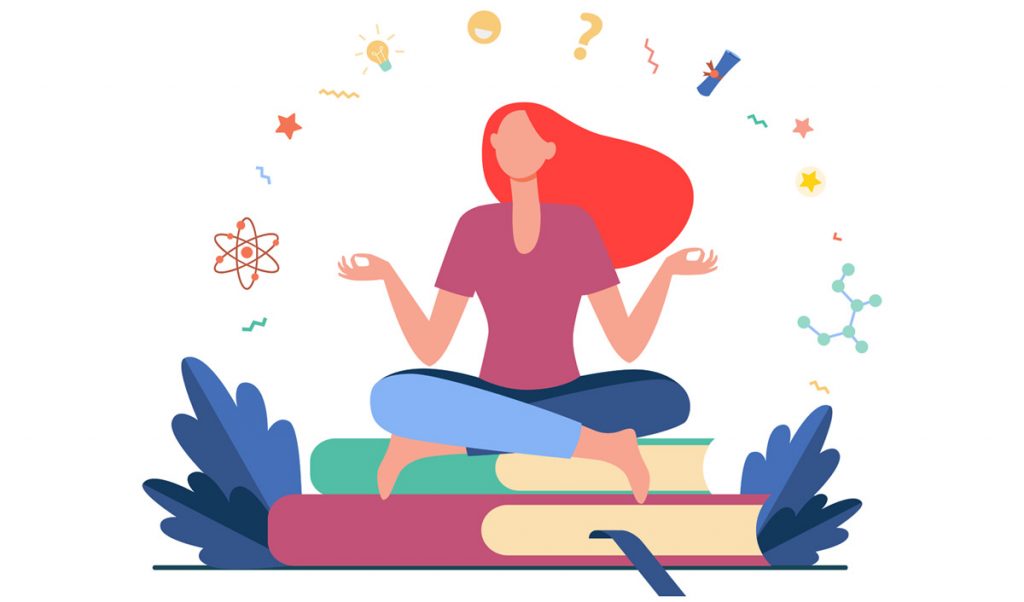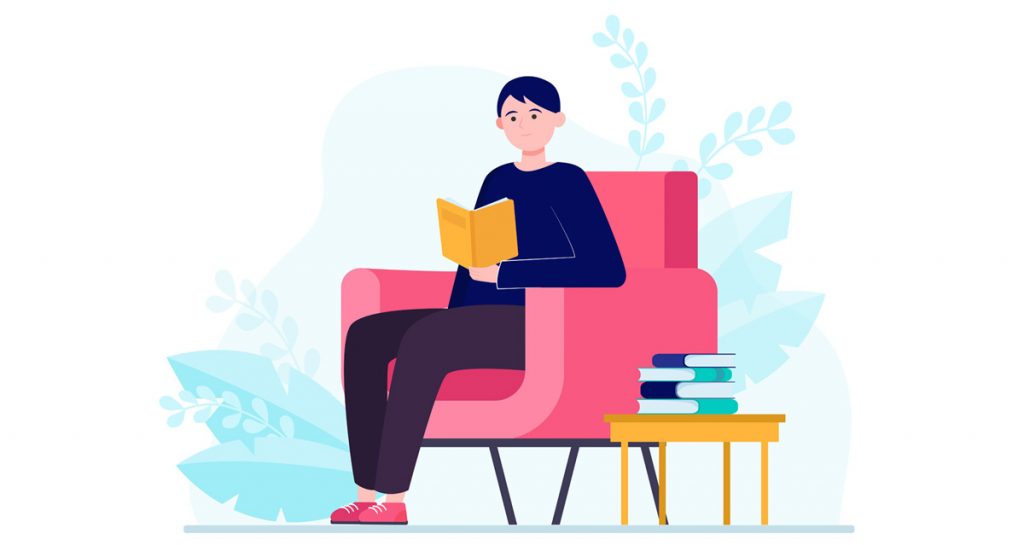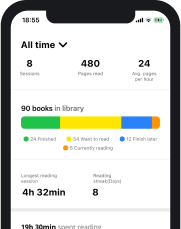While it is a well-known fact that different reading strategies yield different results and serve different purposes, few are as complex and rewarding as deep reading. By choosing the right strategy for each reading session and knowing when to use deep reading and how to approach it properly, you can gain a completely different insight into reading as an activity. Even though deep reading is considered a somewhat complex technique, the results you will be able to enjoy definitely outweigh any of the possible drawbacks.
Here at Basmo, we are committed to helping you explore reading in all of its possible shapes and forms so that you can always choose the right techniques and strategies that best serve your final purpose.
Why is deep reading important and how to do it properly? Keep reading and all your questions will be answered.
What is deep reading?
The deep reading definition varies significantly depending on who you ask. Some see it as a form of critical reading, meaning that they expect deep reading to mean focusing on every single word on the page, analyzing the meaning and the way the text is written. Understanding the deeper meaning of everything, exploring the techniques used by the writer, and dissecting the way each sentence is formed.
Others define deep reading as focusing more on the experience. For them, the importance of deep reading lies in the way the reader lives through the story he reads. Deep reading can be a form of meditation through which the reader becomes one with the story and the characters and basically experiences the entire reading material in the mind’s eye, exploring how it influences their emotions and state of mind.
The term has actually been coined back in 1994 by Sven Birkerts in his book “The Gutenberg Elegies” where he described deep reading as a “slow and meditative possession of a book”. He further explains that in his vision, deep reading is a process that isn’t focused on words, but rather on the way we dream our lives through the words we read.
In other words, deep reading makes every book a portal to a different universe where we allow ourselves to enter through our imagination and a state of mindfulness that helps us experience the book on a much deeper level.
So, what does deep reading consist of? Well, as you can see, it can consist of different techniques, but the most important thing to remember is that all deep reading strategies focus on the same thing: a profound understanding of the content, whether that means a technical analysis of the text and all of its subtle details or experiencing the text on a deep level and internalizing it.
How to do deep reading? Our step-by-step guide
Now that you know what deep reading is, it is time to learn how to do it properly. It may seem like an overwhelming process when you first find out what it is, but the truth is that just by following a couple of steps and implementing some straightforward deep reading techniques, you can take full advantage of all the benefits with relative ease. Without further ado, here is our guide to perfect deep reading sessions.
1. Make sure you know what your goal is
Needless to say, every time we do something, we need to know why we are doing it and what we are hoping to achieve through that particular action. When it comes to reading, things are not any different. In order to successfully complete a deep reading session, you need to be aware of your ultimate goals.
What do you hope to gain from reading a text deeply? Do you hope to experience a particular book on a deeper level? Do you want to analyze how it was written and perhaps try to understand the mental process the author went through creating it?
The clearer your purpose is, the more motivated you will be to keep at it and push yourself even when things become tiring or difficult.
2. Choose the text carefully
There should be no surprise here, but not every text or book out there should be read deeply. Choosing the right book for deep reading can make a huge difference in terms of what you manage to achieve by reading it.
Some books simply don’t have enough substance to deserve the effort of deep reading them. While there is nothing wrong with that because we will always need easy, fun, and relaxing things to read, it’s important to understand how to apply different reading techniques to different texts depending on their complexity and, dare I say it, value.
3. Skim first
Yes, even though deep reading is the exact opposite of skimming or superficial reading, they simply cannot exist without each other. Skimming a text before engaging in a deep reading session will give you a vague idea of what the content is about, what you can expect to find in the book, or what you are going to learn.
Skimming is a great tool to use even if you’re just looking to find out whether a particular book is worth being read deeply. Simply look at the headlines, read the introduction and conclusion, check some of the chapter titles, and quickly scan some of the pages to try and gain a vague understanding of the information you are about to expose yourself to.
4. Read slowly
Once the skimming is done and you have decided to read the entire book or text, it’s time to start the actual deep reading process. One thing you will always need to keep in mind is that you need to take your time. Reading slowly is mandatory for any deep reading session.
The slower you read, the more time you give yourself to actually understand and absorb the information at hand. You have the chance to analyze the text and how it was written and you can let your imagination place you in the middle of the story as an observer.
Living through the book you are reading is something that requires a very low reading speed which will make it possible for you to visualize what you are reading and actually imagine the things you are reading about. Pay close attention to the way the text is written, what techniques the author is using, and how it makes you feel.
5. Take notes
Note-taking is quite important for the end results of a deep reading session. You should feel free to write down anything that seems important. Jot down character names, new words you’re learning, how the book makes you feel, or even where you anticipate the action to go next.
Try making predictions, use your imagination to try and figure out what the author was thinking while writing the book, and make notes of every single detail you think will be an important part of the story.
6. Ask questions
As you read, you should try to ask questions and find the answers to them. Ask yourself why the author chose to write this particular text, how he did the research for writing it, and what he was feeling.
Ask questions about the techniques used, about the information you are about to acquire, about your own feelings and state of mind, and do your best to answer them all by the time the book is over.
This questioning strategy can have a positive effect on the outcome of the reading session because it keeps you engaged in the reading you are doing.
7. Think about what you read
The final stage of a deep reading session should always be reflection. It is a stage where you analyze what you achieved through reading this particular text, what you learned, and how you feel.
It is a crucial step in the deep reading process, as it involves a lot of introspection and shifts the focus from the actual reading to the experience the session has offered you. Have you learned what you were expecting to learn? Did you enjoy reading this particular book? Will you read other books from the same author or genre?
It’s always important to analyze your reaction to what you are reading and evaluate whether you have managed to actually meet the goals you set at the beginning of the session. What could you have done better? How can you improve the experience in the next reading session? All these are questions that, when answered, will offer you a chance to improve constantly.
How to enjoy better deep reading benefits with Basmo
As you can tell, deep reading is no walk in the park. It is an intense mental process that requires time and dedication. The good news is that the benefits definitely outweigh the disadvantages and that you can always rely on a reading tracking app like Basmo to make the process easier and smoother. Here’s how.
Basmo takes note-taking to a new level. Our app comes with a note-taking feature that will certainly help a lot in your deep reading sessions. As soon as a reading session is started, the note-taking functionality becomes available and all you need to do is actually start typing. The notes will remain saved within the book you were reading and you can actually format and customize them however you see fit.
Keep a reading journal with Basmo. If taking notes within each individual book doesn’t seem like enough for your deep reading habits, you will be pleased to learn that Basmo also comes with an alternative feature. You can use our app to keep a reading journal. Feel free to write as much as you please about your reading experience and rest assured that your thoughts will always remain saved and will always be easily accessible.
Reading lists are easy to keep. While some books deserve to be a part of your deep reading sessions, others are simply not. To avoid investing too much time deep reading books that are simply not worth it, it could be a good idea to keep separate reading lists. With Basmo, creating and editing your reading lists is easy and quick.
Deep Reading vs. Speed Reading
As I mentioned above, deep reading and speed reading are complete opposites, but somehow they are equally important for you as a reader.
As the name suggests, speed reading is a process that favors quantity and speed over quality. It is a reading strategy that can allow you to superficially familiarize yourself with large quantities of information in a short period of time. While that can be useful in certain scenarios, it is definitely not a sustainable reading strategy in the long run.
While deep reading makes you focus on comprehension, retention, and the actual experience, speed reading compromises these things favoring speed and the ability to go over large quantities of data in the shortest time possible. Deep reading is going to make you experience the books on a deeper level, while speed reading is going to reward you just with a vague understanding of the content and the main ideas.
Both strategies have their own advantages and drawbacks, and it is very important for you to be able to choose the right strategy in different scenarios. This is what is going to ultimately make you an accomplished reader.
What are the benefits of deep reading?
Putting your deep reading skills to good use is certainly going to yield some results. While there are definitely enough reading benefits to make it a daily habit, by following a couple of deep reading examples, we realized that this technique comes with quite a lot of extra value. Here are the most important benefits of deep reading.
1. It’s great for your mental health
Engaging in deep reading is going to put quite a lot of distance between you and your daily life. This can provide you with a great escape from your daily troubles, which is going to work wonders for your state of mind, level of stress, and general well-being.
2. It promotes deeper thinking
Deep reading is a technique that will teach you to put much more thought into other aspects of your life. Getting into the habit of analyzing what you are reading, exploring your inner experience, and becoming aware of your own thoughts and feelings regarding the texts you are reading is going to have a positive effect on your thinking in general.
3. It improves your ability to focus
Your concentration level and your ability to focus are skills you need to constantly train in order to achieve the best results. Deep reading is a great exercise routine for your brain and will considerably improve your ability to deeply focus on certain tasks for extended periods of time.
4. It adds value to your time
Ultimately, deep reading will help you achieve more and extract more value from your reading. One hour of speed reading will probably allow you to cover a lot of ground in terms of the number of pages you will go over, but one hour of deep reading is going to be a lot more rewarding. You will experience more, comprehend more, and retain more.
Final thoughts
Deep reading is a must-have skill in every reader’s toolbox. Develop your deep reading skills with Basmo for a smoother experience and enjoy all the benefits this strategy can offer you.
Image by storyset on Freepik







